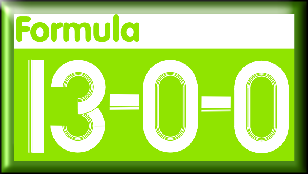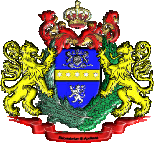
Formula 13-0-0 © Old Elaboratory & Apothecary (USA) LLC. FETPROD


Old Elaboratory & Apothecary Ltd

Links
Terms&Conditions
Since the dawn of mankind, the history of medicine has accompanied the man. The treatment of disease probably started in prehistoric times through contact with nature, with the observation of animal behavior with the intrinsic human curiosity and the experience accumulated after the accidental ingestion or provoked in some plant species .
To illustrate this concept, we can cite the "Legend of the Celandine (Chelidonium majus) or" grass golondrinera "(Greek for swallow is called''khelidôn'') quoted by Dioscorides and Pliny the Elder: A few swallows squeeze this plant in the eyes of their offspring and feed them from their stems, to destroy the eye membrane that prevents them from sight in the first moments of life. Or for some snakes when moult come to rub a rough tree bark and then where moss grows for re hydration and moisture, or some dogs that eat the leaves of anise to detoxify stomach indigestion or other animals that use herbs and plants to benefit from its medicinal properties.
In primitive communities, sorcerers and healers used medicinal plants in their rituals, animal substances and organic and inorganic substances to heal the sick. The healers were familiar with the flora of the place where they lived, with its medicinal powers and toxic and side effects, besides using rituals, gestures, costumes and attitudes or magic words, and the curative effect was strengthened by the addition of the "magic power" of the healer.
The use of medicinal plants in traditional Chinese medicine dates back some 10,000 years. That medicine have cataloged some 7,000 different species and has developed a unique system of treatment that is based more on taste, smell and temperature of the plant, which in pharmacological studies. Among the most ancient texts include the Pen Tsao (year 2,800 BC) cited plants known as camphor or ginseng.
In the western world know the existence of herbal from the time of the Assyrians, Babylonians, Phoenicians, Sumerians and Egyptians. In Egyptian mythology Isis was the goddess of health and was seen investigating the laws of life and health, as well as methods for growing food and medicinal species. The famous Ebers Papyrus, the year 1700 B.C. cites approximately 700 plants used for medicinal purposes, including garlic, which was given to the slaves who built the pyramids to preserve them from the pestilence.
In Greece and Rome medicine begins around the fourth century BC with Alcmeon of Croton and runs until the year 476 AD (Until the fall of the Roman Empire.) During this period, notes the influence of religion, Galen gives the technical basis for the preparation of major pharmaceutical forms. Distinguishable, as was done in Egypt, drugs for external use (creams, lotions, ointments ...) of internal use (infusions, decoctions, fermentation ...), written by Dioscorides is discovered terra sigillata, which prepared to create tablets. This man (Dioscorides, the same as the Legend of the Celandine) is called the father of pharmacology and who strengthens the separation of pharmacy and medicine in the Middle East, the Arabs being responsible for this separation. Avicenna later describe various pharmaceutical forms for administering medication: sachets, tablets, syrups, powders, ointments, aromatic baths, oils, tinctures, medicinal drops, laxatives, enemas, etc.
After the fall of the Roman Empire, Byzantium preserved initially sterility being Greco-Roman science. Meanwhile, the Arab civilization absorbed the Greek and Roman science, makes input and transmits it to the Western world. During this period we have the first evidence that the Pharmacy.
During the Renaissance, elaboratorios appear, so named for being the place where drugs were manufactured. These then create the pharmacy (which comes from the Greek word apotheke, store or grocery store) as places to sell drugs and products. Many of these elaboratorios and pharmacies were created by monks who cultivated plants and herbs and medicines and ointments elaborated nursing convent. Products such as Water della Regina, Olio da Bagno di Aqua lavender or such a success that is when they decide to sell directly to the public through pharmacies (also called apothicaria or apothecaries).
Later, during the seventeenth and eighteenth centuries on, the roles of pharmacists and would gradually elaboratorios private entrepreneurs, who with the passage of time would change the name to the laboratory elaboratorios and pharmacies would call them pharmacies, as we know it today.
To illustrate this concept, we can cite the "Legend of the Celandine (Chelidonium majus) or" grass golondrinera "(Greek for swallow is called''khelidôn'') quoted by Dioscorides and Pliny the Elder: A few swallows squeeze this plant in the eyes of their offspring and feed them from their stems, to destroy the eye membrane that prevents them from sight in the first moments of life. Or for some snakes when moult come to rub a rough tree bark and then where moss grows for re hydration and moisture, or some dogs that eat the leaves of anise to detoxify stomach indigestion or other animals that use herbs and plants to benefit from its medicinal properties.
In primitive communities, sorcerers and healers used medicinal plants in their rituals, animal substances and organic and inorganic substances to heal the sick. The healers were familiar with the flora of the place where they lived, with its medicinal powers and toxic and side effects, besides using rituals, gestures, costumes and attitudes or magic words, and the curative effect was strengthened by the addition of the "magic power" of the healer.
The use of medicinal plants in traditional Chinese medicine dates back some 10,000 years. That medicine have cataloged some 7,000 different species and has developed a unique system of treatment that is based more on taste, smell and temperature of the plant, which in pharmacological studies. Among the most ancient texts include the Pen Tsao (year 2,800 BC) cited plants known as camphor or ginseng.
In the western world know the existence of herbal from the time of the Assyrians, Babylonians, Phoenicians, Sumerians and Egyptians. In Egyptian mythology Isis was the goddess of health and was seen investigating the laws of life and health, as well as methods for growing food and medicinal species. The famous Ebers Papyrus, the year 1700 B.C. cites approximately 700 plants used for medicinal purposes, including garlic, which was given to the slaves who built the pyramids to preserve them from the pestilence.
In Greece and Rome medicine begins around the fourth century BC with Alcmeon of Croton and runs until the year 476 AD (Until the fall of the Roman Empire.) During this period, notes the influence of religion, Galen gives the technical basis for the preparation of major pharmaceutical forms. Distinguishable, as was done in Egypt, drugs for external use (creams, lotions, ointments ...) of internal use (infusions, decoctions, fermentation ...), written by Dioscorides is discovered terra sigillata, which prepared to create tablets. This man (Dioscorides, the same as the Legend of the Celandine) is called the father of pharmacology and who strengthens the separation of pharmacy and medicine in the Middle East, the Arabs being responsible for this separation. Avicenna later describe various pharmaceutical forms for administering medication: sachets, tablets, syrups, powders, ointments, aromatic baths, oils, tinctures, medicinal drops, laxatives, enemas, etc.
After the fall of the Roman Empire, Byzantium preserved initially sterility being Greco-Roman science. Meanwhile, the Arab civilization absorbed the Greek and Roman science, makes input and transmits it to the Western world. During this period we have the first evidence that the Pharmacy.
During the Renaissance, elaboratorios appear, so named for being the place where drugs were manufactured. These then create the pharmacy (which comes from the Greek word apotheke, store or grocery store) as places to sell drugs and products. Many of these elaboratorios and pharmacies were created by monks who cultivated plants and herbs and medicines and ointments elaborated nursing convent. Products such as Water della Regina, Olio da Bagno di Aqua lavender or such a success that is when they decide to sell directly to the public through pharmacies (also called apothicaria or apothecaries).
Later, during the seventeenth and eighteenth centuries on, the roles of pharmacists and would gradually elaboratorios private entrepreneurs, who with the passage of time would change the name to the laboratory elaboratorios and pharmacies would call them pharmacies, as we know it today.
HISTORY OF MEDICINES